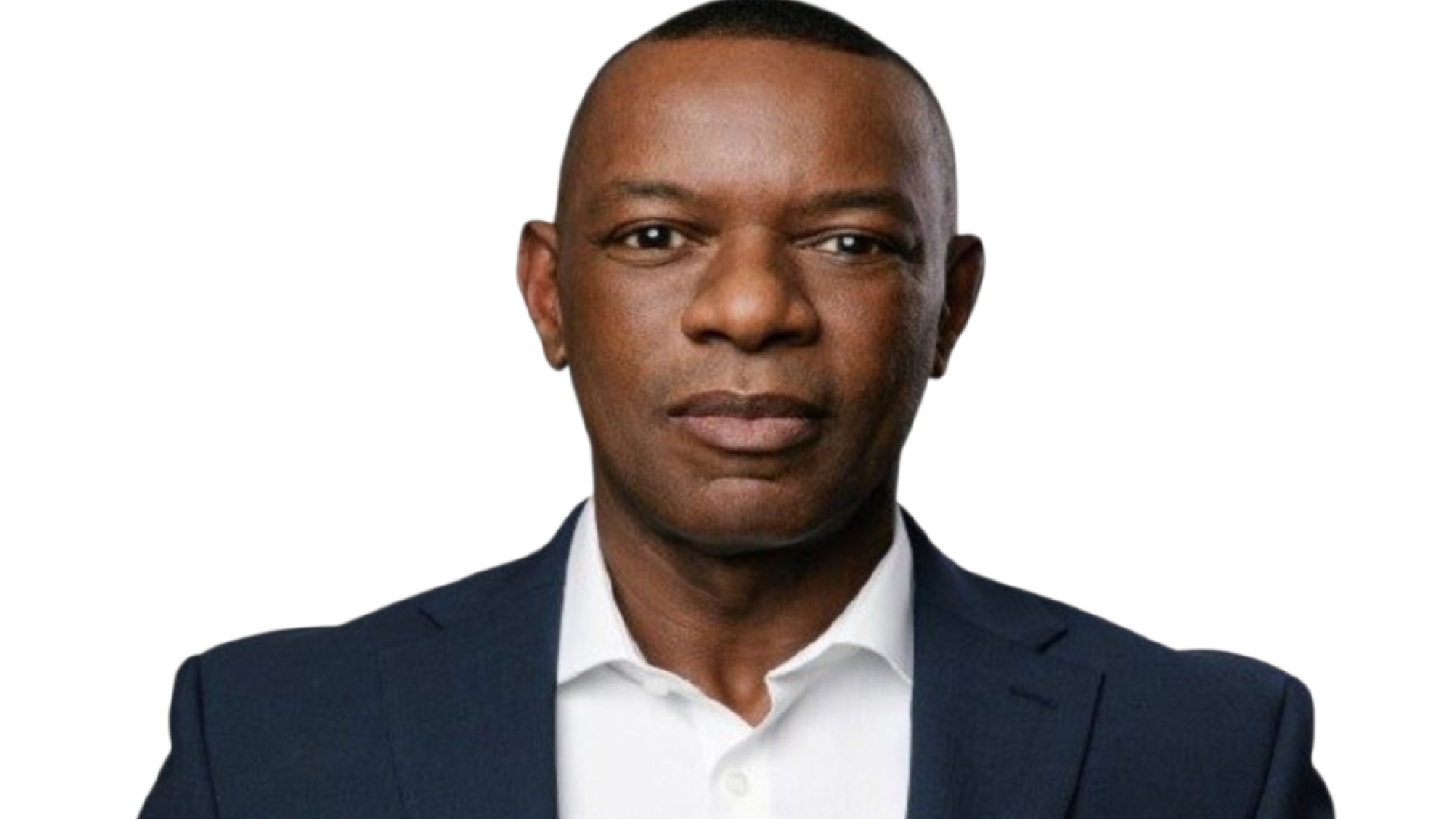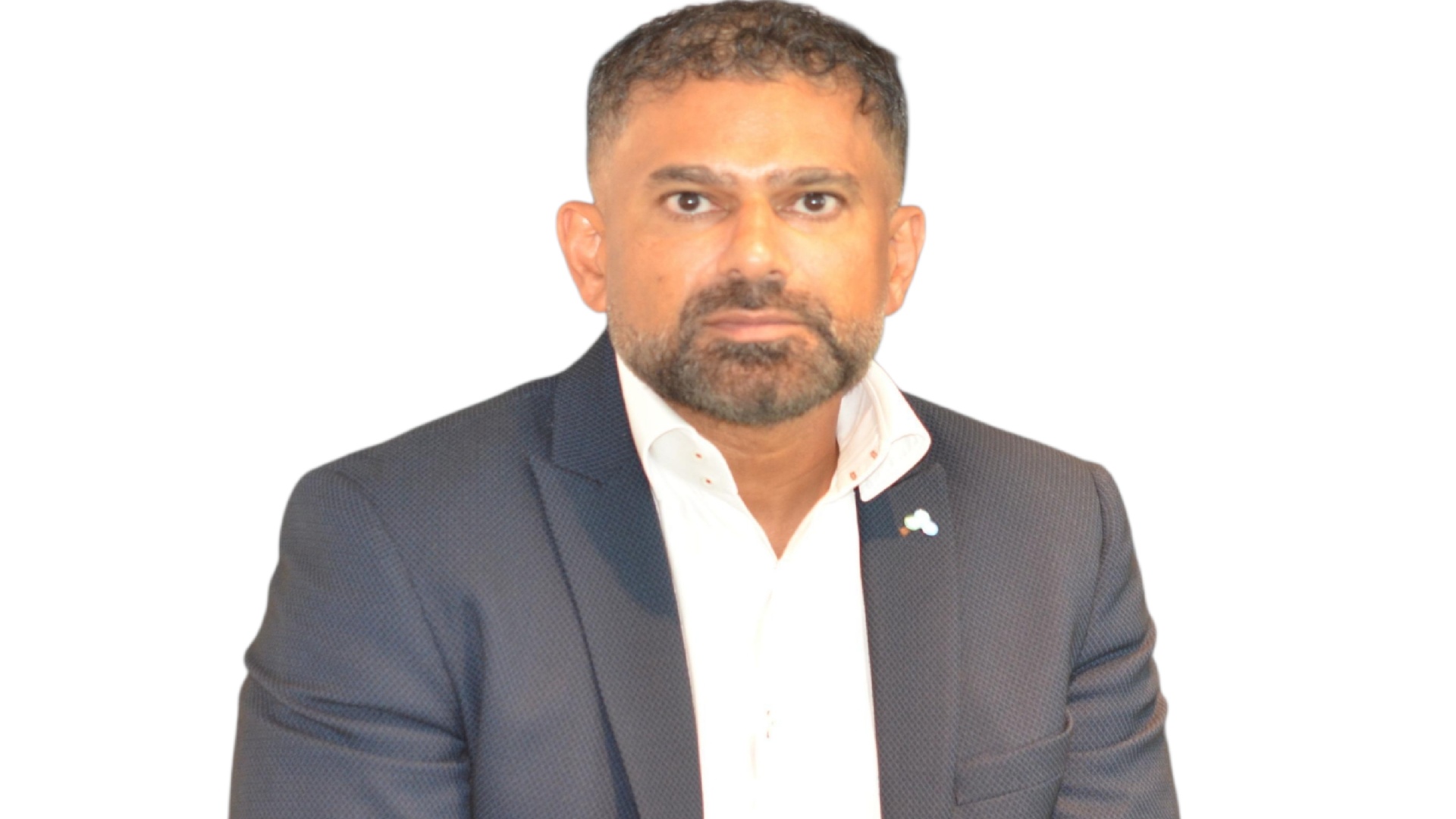Technology
UNLOCK Blockchain Forum attracts over 500 attendees
The UNLOCK Blockchain Forum which commenced today at the Ritz Carlton Hotel DIFC and which will continue until January 15th 2018 has proven once again that Dubai is a vanguard when it comes to attracting innovative experts, blockchain start-ups, and forward looking attendees.
Al-Iktissad-Wal-Aamal, the organizers of UNLOCK Blockchain forum were not surprised to receive more than 60 blockchain start-ups from more than 39 countries, as well as more than 40 prominent expert speakers, and more than 500 participants.
HE Dr. Aisha Bint Buti Bin Bisher, Director General of Smart Dubai, the office driving Dubai’s city-wide transformation delivered her keynote speech at the opening. HE stated, “Guided by the example of our nation’s leadership, we have learned to continually look to the horizon to start creating the future today. And while others were still debating the prospects of this new technology, we got to work. We are making Dubai the blockchain capital of the world, we have 20 public sector Blockchain use cases and it’s only the beginning”.
“Dubai took the forward-thinking approach and broke ground on the bold Dubai Blockchain Strategy, and by supporting events such as the UNLOCK Blockchain Forum, we are building a platform to share our learnings and prepare Dubai, and the world, for the future of Blockchain.” HE added.
Walid Abou Zaki, executive director, Al-Iktissad-Wal-Aamal stated, “When I first heard the word blockchain I knew it was a game changer, and we at Iktissad Wal Aamal endeavour to learn and understand our topics in-depth because we see ourselves as more than just event organizers. We are proud today to say that our efforts have met with success not only in terms of quantity but the quality of participation and the content being discussed. We believe that the next step in the right direction will entail creating the right regulations for Initial Crowd Funding ICOs as this will attract serious blockchain start-ups as well as position Dubai uniquely.”
The first session of UNLOCK took a close look into blockchain on the eve of its 9th anniversary. Renowned speakers such as Oliver Bussmann, CEO of Bussmann Advisory, James Wallis, VP Blockchain IBM, Dr. Abdulla Kablan Blockchain Advisor to the government of Malta discussed together which platforms would prevail, what forms of blockchain would take precedence over others and how the future of blockchain platforms would evolve.
The second panel at UNLOCK delved into the topic of how to create successful blockchain implementations. Zeina Al Kaissi, Head of Emerging Technology and Global partnerships, Smart Dubai, Andrea Tinianow Director of Global Delaware, Founding Director of Delaware Blockchain initiative, Vincent Wang Chief Innovation officer Wanxiang holdings China and other prominent speakers discussed examples of real hands on blockchain implementation projects and how those projects differed from traditional implementations. They also offered key learning’s and advice for those who endeavour to implement blockchain in the near future.
Ramez Dandan, National Technology Officer, Microsoft Gulf stated, “Investment in blockchain, across the GCC and beyond, is ramping up at an impressive rate, as organisations recognise it for the disruptive digital transformation technology that it is. Microsoft’s participation in UNLOCK follows its commitment in Feb 2016 to the Dubai Future Foundation’s Global Blockchain Council because we strongly believe in the technology’s immense potential for enterprises of all scales and industries. It allows them to share business processes with suppliers, customers and partners, leading to new opportunities for multi-party collaboration and, eventually, exciting new business models.”
Hon Silvio Schembri, Parliament Secretary for financial services and digital Economy and Innovation, Prime Minister Office Malta, provided a keynote on what Malta has accomplished so far with Blockchain. Security expert from DarkMatter Mr. Jason Cooper, Blockchain Specialist delivered a keynote on how using Blockchain can streamline government and cities securely.
The afternoon sessions at UNLOCK saw two tracks. Panel discussions centered on Blockchain and the utilities sector. Mr. Mahmoud Abu Fadda, Senior specialist Innovation and Future at DEWA talked about DEWA’s future plans to create electric vehicles charging using Blockchain. The session also included speakers from Sun Exchange and Ambrosus.
The panel session Dubai the next Blockchain startup valley, witnessed an announcement by Ralf Glabischnig, Managing Partner, Inacta; Partner, Lakeside Partners; Co- Founder of Crypto Valley Labs, Switzerland for the intention to open Crypo Valley labs for Blockchain start-ups and entrepeneurs in Dubai.
In parallel sessions, startups were showcasing how they successfully built Blockchain solutions to solve the problems facing our societies and economies of today. Blockchain startups ranging from Malaysia, UK, Russia, and even Estonia were among speakers in these sessions. Some prominent startups included Naked Technologies, Credits, threefold, Acorn Collective and Echarge. Other startups sessions centered on what Blockchain was doing for healthcare sector. Curecoin, medicalchain, and Etheal were some of the startups presenting.
Day One ended with Mr. Bussmann keynote speech that stressed on how one can stay ahead of the Digital disruption curve. As he stated, “The central business logic of today is being replace by Smart Contracts. First Blockchain movers are focusing on selective & existing cases into production with the highest benefit impact. The convergence of emerging technologies will blur the lines between industries in a highly connected real-time world.” He also gave many examples of what Blockchain startups are doing in the realm of trade, finance, and food supply.
The second day of UNLOCK Blockchain will see interesting panels on Banking, real-estate, smart city Blockchain implementations as well as more startup sessions.
Tech Interviews
Unlocking ROI: How Sovereign AI Platforms Accelerate Innovation

Exclusive Interview with Kevin Dallas, Chief Executive Officer, Enterprise DB
You interviewed more than 2000 senior executives across 13 countries about how they are planning for a genetic AI world. Why a genetic AI and why now?
Well, first of all there’s a large economic opportunity around AI. We forecast to be $16 trillion by 2030, and there’s about a trillion dollars that’s going to be spent in the area of AI over the next 12 months alone. So, every enterprise, every nation is investing in AI.
And when we say AI, there’s different types of AI. There’s generative AI, genetic AI, physical AI, and the time is now for that investment. You’re seeing it in the event today where many companies are making investments across the AI spectrum.
What is the data and AI sovereignty, and what happens when enterprises make it a mission-critical part of their strategy?
Well, to be able to actually run these intelligent applications, there is a need for a sovereign data and AI platform from EDB, Enterprise DB, our partners, NVIDIA, RedHat, and Supermicro. And with this new sovereign platform, we hope to deliver our customers the platform that they need to drive rapid innovation around these new AI applications.
Data sovereignty is gaining increased attention globally in the Middle East and the surrounding markets. How is EDB ensuring compliance, trust, and performance in your deployments?
Well, first of all, we’re finding that in this survey, it was very interesting, 95% of respondents are investing in a sovereign data and AI platform over the next three years.
And what they’re seeing is real benefits. They’re seeing two to three extra the velocity in terms of building out AI applications, and they’re seeing a five-fold increase in ROI. So, this is driving a lot of attention around this space.
Now, from an EDB perspective, we are delivering a standard sovereign data and AI platform that accelerates our customers to market. So, it’s a plug and play platform that resolves the security issues, compliance issues, and regulatory challenges that our customers have in a plug and play way.
How important is the UAE or the GCC region for EDB? Can you tell us about your corporate strategy in the GCC and how that aligns with the regional’s national agenda?
Well, what we found is that the biggest investments globally in sovereign data and AI are actually happening here in the region, in the UAE. There is a national vision that’s been set around open and around sovereign data and AI.
So, we’re very aligned in terms of our approach here. And the region, it’s very much like a Silicon Valley of sovereign data and AI, where there’s a lot of rich discussion around new use cases that our partners and our customers want to enable today versus tomorrow. So, it’s here and now in the region.
Looking ahead, six to 12 months from now, what is your message to the enterprises, governments, and other organizations who are considering or already on the AI journey?
I think in the next six to 12 months, focus on building your own sovereign data and AI platform. By doing this, it’s going to have a fivefold increase in your ROI and certainly increase your velocity to market.
But there is also, I think, a misconception. When we talk about sovereign, we talk about the benefit of secure, we talk about the benefit of compliance and regulatory requirements. Meeting those criteria, in some cases, can be viewed as slowing down the rate of innovations.
The opposite is true with our platform. By using a platform that has this capability built in, you’re able to accelerate your time to market.
How does EDB Postgres AI support data sovereignty in practice?
From a sovereign data and AI platform perspective, there are five key criteria that our customers need in the platform. One, open source based. This guarantees interoperability, access to talent, and it avoids vendor lock-in. This is something that even at a national level is important, open source based.
Second, the need to support multiple workloads, transactional, analytics, and AI workloads on one unified platform. Not three, but one. Third, there’s a need for a low-code, no-code application development environment. An environment that accelerates your time to market, an environment that democratizes AI for all.
So, you don’t have to be a developer, you can be a business decision maker and still create applications. Fourth, there needs to be a single pane glass view across the estate so you can monitor, secure, and drive compliance and meet those regulatory requirements across your entire estate. And then last, but by no means least, you need to be able to deploy in a hybrid fashion, meaning it’s not all about running workloads in the cloud.
You need to be able to run workloads on-prem, in the cloud, or in a dedicated system. So Sovereign is really those five things. It’s the ability to deploy in a hybrid manner.
It’s the ability to view your estate through a single pane of glass. It’s the ability to be able to run in a rich and dynamic low-code, no-code app environment, run multiple workloads, and of course, being open source.
Tech Interviews
Regional Enterprises Lead Global Push for Data and AI Sovereignty

Exclusive interview with Kash Rafique, Vice President and GM Middle East and Africa, Enterprise DB
What are your top priorities and what do you want the region to see from EDB that’s new and different at this year’s GITEX?
I think certainly from a messaging point of view, there’s no doubt that sovereignty is the new intelligence on how we move forward in this market. I think what we’re seeing is that our customers are looking for speed, they’re looking for control of their data within their boundaries, and this is making a big difference really to customers and enterprises in the region. I think that’s where we come in as a trusted player, a partner in the region.
What you’re seeing here at the stand today at EDB is really an alignment of that, the immersive experience here we’re giving to our customer to help them understand some of the solutions that we’re able to provide so far as speed is concerned, control of their data within that sovereignty realm is really something that we are showcasing here.
Can you walk us through to the Sovereignty Matters report, which is quite interesting. What are the biggest takeaways for local enterprises?
First of all, I think we should be very proud, of UAE and the Kingdom of Saudi Arabia, because really they’ve come on top of a global report across 13 economies, across 2,000 enterprises, right the way across the globe. I think what is really appealing or revealing from the report is that 17% of organizations in this region are deeply committed to both data and AI, and this is a significant amount. Compare that to what we are seeing globally, which is 13%, or compare it to the UK, which is 10%, this is significantly higher.
It shows real intent and focus on the sovereignty areas, and I think that’s a big thing. The other thing that we see is the 5x return that enterprises are getting from that commitment that they’ve made. I think this is also very, very testimonial on the kind of return that we’re able to see from the sovereign AI solutions that clients are adopting in this region.
And the third one is 2 ½ x are very confident that they will be leading their industries within their respective areas within the next three years. I think this is a fantastic finding. Again, I think the region should be very, very proud of these results.
How is EDB preparing to lead and support its customers through your local office?
So, the local office is there as a hub to support a very important omnichannel of our business here, and that is related to the partners, the alliances, and the ISVs that are regionally based. The office will be used for workshops, training, engineering, and client innovation centers that we’re planning to build as we move through this year.
We certainly looking forward to is building our relationships even further with key partners such as NVIDIA, IBM, Supermicro, Red Hat, and also many of our local partners. We call them our boutique partners, but they’re also equally important. So, from this perspective, it’s a very important base for us.
It provides a hub, it shows investment, and it shows real commitment in the sovereignty space that we’re actively involved with here in the region.
Cover Story
PLAUD Note Pro: This Tiny AI Recorder Might Be the Smartest Life Upgrade You Make!

By Srijith KN
I’ve been using the Plaud Note Pro for over three months now, and this is a device that has quietly earned a permanent place in my daily life now. Let me walk you through what it does—and why I say that so?
Well at first I thought this wasn’t going to do much with my life, and by the looks of it Plaud Note Pro looks like a tiny, card-sized gadget—minimal, unobtrusive to carry it around.
With a single press of the top button, it starts recording meetings, classes, interviews, or discussions. Once you end your session, the audio is seamlessly transferred to the Plaud app on your phone, where it’s transformed into structured outputs—summaries, action lists, mind maps, and more.

In essence, it’s a capture device that takes care of one part of your work so you can concentrate on the bigger game.
Design-wise, the device feels premium, it features a small display that shows battery level, recording status, and transfer progress—just enough information without distraction. The ripple-textured finish looks elegant and feels solid, paired with a clean, responsive button. It also comes with a magnetic case that snaps securely onto the back of your phone, sitting flush and tight, making it easy to carry around without thinking twice.
Battery life is another standout. On a full charge, the Plaud Note Pro can last up to 60 days, even with frequent, long recording sessions. Charging anxiety simply doesn’t exist here.
Well, my impressions about the device changed once I had an audio captured. I tested this in a busy press conference setting—eight to ten journalists around me, multiple voices, ambient noise—and the recording came out sharp and clear. Thanks to its four-microphone array, it captures voices clearly from up to four to five meters away, isolating speech with precision and keeping voices naturally forward. This directly translates into cleaner transcripts. It supports 120 languages, and yes, I even tested transcription into Malayalam—it worked remarkably well, condensed the entire convo-interview that I had during an automotive racing show that I was into.
Real meetings or interviews are rarely happens in a neat environment, and that’s where I found the Plaud Note Pro working for me. It captures nuances and details I often miss in the moment. As a journalist, that’s invaluable. The app also allows you to add photos during recordings, enriching your notes with context and visuals.
I tested transferring files over 20 minutes long, and the process was smooth and quick. Accessing the recordings on my PC via the browser was equally intuitive—everything is easy to navigate and well laid out.

Now to what is inside this tiny recorder. Well, the core of the experience is Plaud Intelligence, the AI engine powering all Plaud note-takers. It dynamically routes tasks across OpenAI, Anthropic, and Google’s latest LLMs to deliver professional-grade results. With over 3,000 templates, AI Suggestions, and features like Ask Plaud, the system turns raw conversations into organized, searchable, and actionable insights. These capabilities are available across the Plaud App (iOS and Android) and Plaud Web.
Privacy is what I happen to see them look at seriously. All data is protected under strict compliance standards, including SOC 2, HIPAA, GDPR, and EN18031, ensuring enterprise-grade security.
What makes the AI experience truly effective is the quality of input. Unlike a phone recorder—where notifications, distractions, and inconsistent mic pickup interfere—the Plaud Note Pro does one job and does it exceptionally well. It records cleanly, consistently, and without interruption, delivering what is easily one of the smoothest recording and transcription experiences I’ve used so far.
I’m genuinely curious to see how Plaud evolves this product further. If this is where they are today, the next version should be very interesting indeed.
“The Plaud Note Pro isn’t just a recorder; it’s a pocket-sized thinking partner that captures the details so you can think bigger, clearer, and faster.”
- Plaud Note Pro is now available for pre-order at https://uae.plaud.ai/pages/plaud-note-pro
- Plaud Note and NotePin are available at https://uae.plaud.ai
-

 Tech News1 year ago
Tech News1 year agoDenodo Bolsters Executive Team by Hiring Christophe Culine as its Chief Revenue Officer
-

 VAR9 months ago
VAR9 months agoMicrosoft Launches New Surface Copilot+ PCs for Business
-

 Tech Interviews2 years ago
Tech Interviews2 years agoNavigating the Cybersecurity Landscape in Hybrid Work Environments
-

 Tech News6 months ago
Tech News6 months agoNothing Launches flagship Nothing Phone (3) and Headphone (1) in theme with the Iconic Museum of the Future in Dubai
-

 Tech News2 years ago
Tech News2 years agoBrighton College Abu Dhabi and Brighton College Al Ain Donate 954 IT Devices in Support of ‘Donate Your Own Device’ Campaign
-

 VAR1 year ago
VAR1 year agoSamsung Galaxy Z Fold6 vs Google Pixel 9 Pro Fold: Clash Of The Folding Phenoms
-

 Editorial1 year ago
Editorial1 year agoCelebrating UAE National Day: A Legacy of Leadership and Technological Innovation
-

 Tech Features11 months ago
Tech Features11 months ago5 Urgent Questions About Healthcare Network Cybersecurity in the Middle East














